TRADES LANDSCAPE
TECHNOLOGY ISSUE
THE AI REVOLUTION in nursery growing
REAL-TIME KINEMATIC technology
THE DIRT on growing media


MARCH 2024 CANADA’S PREMIER HORTICULTURAL TRADE PUBLICATION
Advanced Suspension
The advanced four-wheel suspension system allows for a smooth ride and consistent cut.
2-Belt Pulley System
Less stress on each belt maximizes lifespan and minimizes maintenance.
Sturdy Mowing Deck
Take on the job with a mower built for the long haul with its professional-grade fabricated mowing deck.
Premium Suspension Seat
Discover optimal comfort on the STIHL RZ 700 Series with adjustable arm rests, back rest, and lumbar support.
THE POWER PROS NEED
The Kawasaki engine provides reliable operation and consistent power output.


STIHL RZ 500 Series
Ideal for farm and ranch users or pros, the STIHL RZ 500 Series comes in 52" and 60" decks and combines comfort with performance.

STIHL RZ 700 Series
Available with a 52” or 60” cutting deck and professional-grade EFI engines, the STIHL RZ 700 Series helps pros maximize the mowing experience.
1 2 3 4 5
1 2 4 5 3 LIMITED WARRANTY PROFESSIONAL 3years 1,500 hours* OR *Whichever comes first. See dealer for details. INTRODUCING ALL-NEW ZER0-TURN mowers ƒ 0% 36 MONTHS financing available on Your Entire Purchase * www.stihl.ca *Subject to credit approval. Approval, and any rates and terms provided are based on credit worthiness. Other financing offers are available. See your local STIHL dealer for details.



MARCH 2024 | 3
20 32 26 FEATURES 20 CULTIVATING TOMORROW The AI revolution in nursery growing BY KARINA SINCLAIR 26 FILTHY RICH The dirt on growing mediums. BY JULIA HARMSWORTH 32 MISSION PRECISION Hitting the mark on turf care with RTK. BY KALI PEARSON
TECHNOLOGY ISSUE


6
36
38
40
KALI PEARSON
Dealing
AI
Plants

COMMUNICATIONS DIRECTOR
Pearson CREATIVE DIRECTOR Mike Wasilewski ASSISTANT EDITOR Robert Ellidge MULTIMEDIA JOURNALIST Karina Sinclair GRAPHIC DESIGN ASSOCIATE Aisha Shaikh ACCOUNT MANAGER Greg Sumsion ACCOUNT MANAGER Liz Lant COMMUNICATIONS COORDINATOR Angela Lindsay DIGITAL MARKETING SPECIALIST Charlotte Guena ACCOUNTANT Joe Sabatino STAFF CONTACT INFO AT LANDSCAPETRADES.COM/CONTACT ADVISORY COMMITTEE Gerald Boot CLM, Lindsay Drake Nightingale, Jeremy Feenstra, Mark Fisher, Hank Gelderman CHT, Nick Winkelmolen Landscape Trades is published by Landscape Ontario Horticultural Trades Association 7856 Fifth Line South, Milton, ON L9T 2X8 comments@landscapetrades.com www.landscapetrades.com Landscape Trades is published six times a year: February, March, May, August, October and December. SUBSCRIPTION RATES: One year – $46.90 | Two years – $84.74 | Three years – $118.64 HST included. U.S. and international please add $20.00 per year for postage and handling. Subscribe at www.landscapetrades.com Copyright 2024. All rights are reserved. Material may not be reproduced in any form without written permission from the publisher. Landscape Trades assumes no responsibility for, and does not endorse the contents of, any advertisements herein. All representations or warranties made are those of the advertiser and not the publication. Views expressed do not necessarily reflect the views and opinions of the association or its members, but are those of the writer concerned. ISSN 0225-6398 PUBLICATIONS MAIL SALES AGREEMENT 40013519 RETURN UNDELIVERABLE CANADIAN ADDRESSES TO: CIRCULATION DEPARTMENT LANDSCAPE TRADES MAGAZINE 7856 FIFTH LINE SOUTH, MILTON, ON L9T 2X8 CANADA TECHNOLOGY ISSUE MARCH 2024 VOL. 46, NO. 2 LANDSCAPETRADES.COM 38 LANDSCAPE TRADES PLEASE RECYCLE YOUR MAGAZINE AND POLY BAG. COLUMNS
Kali
GREEN PENCIL
to the future. BY
Welcome
GROWING YOUR BUSINESS
with a low snow season. BY GRANT HARRISON
INTERNET OF NATURE
and the battle against wildfires. BY DR.
NADINA GALLE
DESIGNERS CORNER
to support biodiversity and delight clients. BY HEATHER JERRARD DEPARTMENTS
LT PICKS Podcasts that explore how AI can support green trades. 10 NEWSSCAPE 42 CNLA NEWS 46 NEW PRODUCTS 50 MENTOR MOMENT Vanessa McQuade’s five marketing mistakes to avoid.
8
SIMPLICITY THAT DOESN’T SKIMP ON PERFORMANCE
Our exclusive MAXOUT® Technology, available on ECHO X Series 56V tools, ensures the unit operates like a gas-powered tool.
OPTIMAL CONTROL FOR LONGEVITY
Using eCM Technology®, our 56V battery management system controls the temperature, charge and discharge to help prolong the life of the battery pack.

DEDICATED TO PROS.
JOIN

PLATFORM. ONE BATTERY. ENDLESS VERSATILITY.
ONE
®
THE
*On Tier 3 of the Landscaper Fleet Program. Terms & conditions apply. See program for full details. ECHO.CA/FLEET
MOST POWERFUL LANDSCAPER FLEET PROGRAM. Save 20% on gas & battery equipment for 24-months*
GREENPENCIL Welcome to the future
BY KALI PEARSON
THIS MONTH IN LANDSCAPE TRADES
, we are talking about tech. And while technology isn’t the first thing most people think about when it comes to working in the green trades, there is no doubt that Artificial Intelligence, robotics and satellite technology are here to stay. Even those of us who might consider ourselves tech challenged have something to be excited about.

To help you think about the big picture, our editors handpicked five thought-provoking podcast episodes exploring how AI can support the green trades — from AI tools to leverage now, to business planning, to how humans and machines can work hand-in-hand.
Taking things a little deeper, this month’s features are sure to spark plenty of ideas for the season and years ahead. We hope they also spark some good discussions with your teams.
Karina Sinclair digs into how AI is being leveraged in the nursery and grower sectors on page 20. She delves into how technology is helping take the guesswork out of some manual tasks, freeing up more time to focus on new ideas and growth, as well as creating brand new jobs in the field. Writer Julia Harmsworth takes tech talk in a different direction — looking at innovations in soil mediums that take their cue from biology to create more sustainable solutions that still provide great results (p. 26). I had the chance to geek out on the evolution of robotic mowers — and how the satellite technology that powers military operations


and autonomous vehicles is driving unprecedented precision and performance (p. 32). Dr. Nadina Galle is also back, exploring how satellite technology is being developed to help prevent wildfires after a devastating 2023 fire season on page 38.
Coming back to earth, Grant Harrison’s business column (p. 36) provides some solid ideas on dealing with a low snow season. Marketing expert Vanessa McQuade shares five marketing mistakes to avoid in order to stand out from the crowd in a competitive market (p. 50), and Heather Jerrard offers her top selections for unusual plants that promote biodiversity and provide visual and sensory interest to gardens on page 40. While I’m not quite ready for a robotic mower, I’ll definitely be adding a few of these plants to my cart as soon as my local nursery opens its doors for the season.
I’ll be honest, as someone who is far from being an “early adopter” when it comes to tech, my mind was a little blown by this issue (in a good way). I hope yours is, too. There are just so many ways technology is already moving the green trades forward: opening up opportunities for those already in the trade — and some pretty cool new jobs and possibilities for those just getting their start.
K Pearson
As always, we love to hear your feedback. Please reach out to editor@landscapetrades.com with your comments, feedback and suggestions.



6 | LANDSCAPE TRADES
@LANDSCAPETRADES
@LANDSCAPETRADES
@LANDSCAPEONTARIO
LANDSCAPE.TRADES
LANDSCAPE TRADES

ADVANTAGE FARM EQUIPMENT
Wyoming 1-866-713-6656
BOBCAT OF BARRIE
Barrie 705-726-2228
www.OakenEquipment.ca
BOBCAT OF BRANTFORD, INC.
Brantford 519-752-7900
www.BobcatofBrantford.com
BOBCAT OF DURHAM EAST, LTD.
Courtice 905-404-9990
www.BobcatofDurhamEast.com
BOBCAT OF GREY BRUCE
Owen Sound 519-372-9100
www.BobcatofTC.com
BOBCAT OF HAMILTON, LTD.
Stoney Creek 905-643-3177
www.BobcatofHamilton.com
BOBCAT OF HURON
Walton 877-887-6365
BOBCAT OF LONDON, LTD.
London 519-455-4900
www.BobcatofLondon.ca
BOBCAT OF MUSKOKA
Muskoka 249-390-7000
www.OakenEquipment.ca
BOBCAT OF PARRY SOUND
Nobel 705-342-1717
www.BobcatofParrySound.com
BOBCAT OF PETERBOROUGH
Peterborough 705-748-9199
www.BobcatofPeterborough.com
BOBCAT OF SAULT STE. MARIE Sault Ste. Marie 705-949-7379
www.Bobcat-ssm.com
BOBCAT OF STRATFORD
MARCH 2024 | 7
Stratford 519-393-6040 www.BobcatofStratford.ca BOBCAT OF THE TRI-CITIES, LTD. Kitchener 519-579-9100 www.BobcatofTC.com BOBCAT OF WINDSOR Windsor 844-807-0120 www.OakenEquipment.ca BOBCAT OF TORONTO Brampton 416-679-4172 Scarborough 416-679-4171 www.OakenEquipment.ca Equipment World Inc. Thunder bay 807-623-9561 www.Bobcat-tbay.com JOHN'S EQUIPMENT SALES & SERVICE, LTD. Frankford 613-398-6522 www.JohnsEquipmentSales.com B ob c a t ® and t he B ob c a t lo go are regis tered t r ademar k s o f B ob c a t C ompany in t he U ni ted S t a te s and var ious o t her c oun t r ies © 2 0 2 2 B ob c a t C ompany A ll r igh t s res er ved THIS IS MORE THAN A MOWER. IT’S THE DRIVING FORCE TO GROW YOUR BUSINESS. WE’RE HERE TO CHANGE THE GAME AND HEIGHTEN YOUR SUCCESS. THIS IS WHERE EPIC HAPPENS EVERY DAY. THIS IS BOBCAT. Bobcat Company is a member of the Doosan Group. Doosan is a global leader in construction, grounds maintenance and material handling equipment, power and water solutions, and engineering that has proudly served customers and communities for more than a century. Bobcat ®, and the Bobcat logo are trademarks of Bobcat Company in the United States and various other countries. ©2024 Bobcat Company. All rights reserved. | 1626
LT Picks
FOR OUR ANNUAL TECH ISSUE, WE’VE

TRADES.
HANDPICKED A FEW PODCAST EPISODES THAT EXPLORE HOW AI CAN SUPPORT THE GREEN
DO YOU HAVE A FAVOURITE PODCAST YOU'D LIKE TO SHARE?
Email your suggestions to editor@landscapetrades.com

The Artificial Intelligence Podcast Revolutionizing Landscaping:
a dive into AI-powered outdoor maintenance
Electric Sheep's cofounder Nag Murty shares the company's origin, challenges and the future vision of creating a sustainable world where machines and humans work hand-in-hand.

Contractor Evolution
10 AI tools contractors might find useful
Brought to you by Breakthrough Academy, this episode outlines a variety of digital tools with AI-driven functions to help train staff, design graphics, create content and improve customer service.

Ask AI
Why are all businesses destined to become AI businesses?
This podcast explores Canada's fast-emerging artificial intelligence sector, how AI isn’t limited to traditional “tech” companies, and the value of companies building their own systems instead of relying on centralized databases.
The Maritime Gardening Podcast
Talking gardening with ChatGPT
Maritimer Greg Auton asks ChatGPT five very common gardening questions, and then determines whether AI software is a good resource for gardening questions in general.
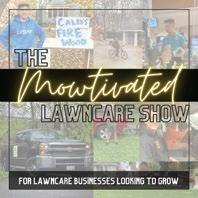
The Mowtivated Lawn Care Show
20 lawn crews, selling his business and the future of AI in lawn care
Hear the story of a serial entrepreneur in the green industry who started a company that's using AI to help service-based businesses close more clients by automating repetitive administrative tasks and sales tasks.
8 | LANDSCAPE TRADES
TRIALED. TESTED.




Winner of multiple prestigious industry awards, Oso Easy Peasy® rose is a landscape standout. Produces continuous, lush sprays of petite doubled blooms, each in the vivid, tropical hue of dragon fruit. As with every rose in the Oso Easy® series, this long blooming beauty exhibits outstanding disease resistance.

MARCH 2024 | 9
rebloom USDA 4-9
tall + wide
Summer
.7m-.9m
SCAN TO LEARN MORE
PROVEN
.
Available from Proven Winner s ® ColorChoice® growers www.provenwinners-shrubs.com
OSO EASY PEASY
® Rosa ‘Phyllis Sherman’ PP#29,167 Continuous Blooms | Disease Resistant
GOVERNMENT OF CANADA BECOMES A FOUNDING MEMBER OF THE EFFICIENT FERTILIZER CONSORTIUM

Canada has joined the Efficient Fertilizer Consortium (EFC), a public-private partnership driven by the Foundation for Food & Agriculture Research. The EFC funds research to advance enhanced efficiency and novel fertilizer products as well as practices that improve crop production while decreasing environmental impact.
This partnership represents a commitment of approximately $1.3 million over four years from the Government of Canada. As a founding member of the Consortium, Canada will influence the strategic direction and research of the EFC. Canada joins 11 other committed members, including the U.S.,
the United Kingdom's Foreign, Commonwealth & Development Office and other international governments, fertilizer companies, crop groups and foundations. There is an ongoing opportunity for Canadian fertilizer and nutrient management innovators to be a part of the Consortium.
There are many innovative fertilizer products currently available. However, more research is needed to better understand their greenhouse gas (GHG) emissions reduction potential and their impact on crop yield in different climates, soil types and management practices. Canada will work with international scientists and key agriculture stakeholders including
10 | LANDSCAPE TRADES NEWSSCAPE
fertilizer companies to conduct this research and ensure its relevance to Canadian agriculture. The EFC will fund research to generate data and evidence on how fertilizers perform both in their support of healthy food crops, and their promise to reduce the GHG emissions and other environmental impacts.

Joining the EFC supports the Government's commitment to reduce GHG emissions in Canada arising from the application
of fertilizers by 30 per cent from 2020 levels by 2030 and builds on the Government's commitment of over $1.5 billion to accelerate the country's progress on reducing emissions, while remaining a global leader in sustainability.
Collaboration with the sector and the international community is essential to making progress towards environment and climate goals while responding to the needs of Canadians.

MARCH 2024 | 11 Working. Smarter. Together. Our products work seamlessly together to make your job beautiful, easier. Scan for the latest version of our product guide. OAKSPAVERS.COM | 1.800.709.OAKS (6257)
BIOLUMINESCENT PLANTS ARE NOW EVEN BRIGHTER:
Light Bio to begin selling firefly petunias to consumers with USDA approval
NEWSSCAPE


Light Bio, a synthetic biology startup, announced in February 2024 that it is beginning to sell its groundbreaking bioluminescent petunias in the United States. With support from biotech leaders such as NFX and Ginkgo Bioworks, Light Bio is reimagining the horticultural industry by introducing a new category of plants that emit an ethereal glow to enrich homes, gardens and public spaces. Although not yet available in Canada, the company did tell Landscape Trades they are actively exploring options to bring these plants to north of the border.
Scientists have revealed advancements in genetic modifications which enhance bioluminescence in a variety of plants by up to 100 times. The team of 26 scientists, working across nine research organizations, created the brighter plants by optimizing genes isolated from multiple species of luminous mushrooms.
The new research builds on an earlier discovery for creating continuously glowing plants by inserting DNA obtained from the mushrooms. Those researchers had revealed a surprising similarity between mushroom bioluminescence and plant metabolism, allowing for more visible light than was previously possible. In this new report, the scientists have adapted the inserted genes to further boost luminescence.
The improvements were not limited to glowing plants. The scientists showed that the genetic modifications also elevated luminescence in yeast and mammalian cells.
But the luminescence in plants was entirely self-sustaining owing to the metabolic synergy. This enables perpetual illumination without any external aid. Petunias provided the brightest bioluminescence, especially in the flower buds.
Beginning in April, glowing petunias will be available under the brand Firefly Petunia, so named because the bright buds resemble fireflies. Last September, the USDA determined through its independent evaluation that Light Bio's genetically engineered Firefly Petunia may be safely grown and bred in the United States. This creates an unparalleled opportunity for plant enthusiasts to enjoy the experience of living light.
Light Bio chose the petunia as its first product because it is one of the most popular ornamental plants in the world. Petunias are easy to grow and produce an abundance of flowers. The Firefly Petunia is indistinguishable from conventional petunias, except that it gives off an ethereal aura at night. From seedling to mature plant, it glows without any specialized requirements or treatment.
The soft illumination of the Firefly Petunia is similar to moonlight, creating an opportunity for plant enthusiasts to enjoy the experience of living light. "This milestone — and the magical experience we are bringing to people across the country — has been decades in the making," said Keith Wood, CEO of Light Bio. "As part of the scientific team that discovered the bioluminescence genes from fireflies, I helped create the first glowing plant in 1986, which has inspired scientists worldwide. In
the forty-odd years since, we have discovered a new bioluminescence technology that now allows us to bring these delightful plants to consumers. We can't wait to see their reactions and to discover the bright future ahead for this incredible technology."
"This is an incredible achievement for synthetic biology. Light Bio is bringing us leaps and bounds closer to our solarpunk dream of living in Avatar's Pandora," said Jason Kelly, CEO and co-founder of Ginkgo Bioworks. "This achievement isn't just novel and exciting — it shows how the power of synthetic biology can light a passion for nature and technology. We at Ginkgo are thrilled to continue to support Light Bio in illuminating the world. And we couldn't be more excited by our partnership, in which our teams are working together to make the next generation of their glowing plants ten times brighter."
Light Bio continually optimizes the genetics of bioluminescent plants to further increase brightness. Working in collaboration with Ginkgo Bioworks, Light Bio anticipates that future plants will be at least 10-fold brighter. More plant varieties and more colours are also envisioned. The underlying science also helps to shed light on the molecular physiology of plants. The teams believe that insights gained from this research will bring meaningful advancements across critical areas like food security and nutrition.
For more information on Light Bio and its glow-in-the-dark plants, please visit light.bio.
12 | LANDSCAPE TRADES
Source: Light Bio


Platinum Natural Stone specializes in providing high quality Armour Stone for landscaping, retaining walls and shoreline construction projects.
Platinum offers a variety of products including: Armour Stone, Flagstone, Weathered Cap Rock, Natural and Saw Cut Steps and Skidded Armour.
Platinum is open year round for all your Armour Stone needs. Rain, snow or shine!



INSTALLED BY

MARCH 2024 | 13 PLATINUMNATURALSTONE.COM 1950 PETERBOROUGH COUNTY RD 36, BUCKHORN, ON (HWY 36 & HWY 507) INFO@PLATINUMNATURALSTONE.COM | OFFICE: (249) 387-2690 LANDSCAPE | WALLS | SHORELINE | CUSTOMER FOCUSED | LARGE INVENTORY PICK UP OR DELIVERY AVAILABLE – FLATBED OR ROLL-OFF BINS
INTERNATIONAL PLANTSCAPE AWARDS 2024
For the third consecutive year, the International Plantscape Awards (IPA) were presented at the Tropical Plant International Expo (TPIE) in Fort Lauderdale, Florida, on Jan. 18, 2024. There was an 80 per cent increase in submissions over last year for the IPA program.
The International Plantscape Awards recognize outstanding achievements in interior plantscape design, installation, creativity, renovation and innovation. These awards celebrate the strides of interior plantscapers to connect people with plants in remarkable ways. Entries are judged on their own merit rather than against each other. Award winners earn a designation of gold or platinum based on points scored from information and photos provided. Certain submissions may be awarded the coveted Diamond and Emerald judges’ awards for the best overall entries.
The awards program is open to all individuals or firms actively involved in interior plantscaping. Award submissions are judged by a panel of distinguished plantscapers who serve in


the Interior Plantscape Community. Categories are: Design, Installation, Major Renovation, Special Event and Holiday, Silk, Replica and Preserved, Horticultural Service, Technician Recognition, Atrium/Garden Plantings, Interior, Conservatory, Living Wall, Moss Wall, Green Roof or Rooftop Gardens, Hotel Pool and Resort, Exterior Build Façade, Free-standing Containers, Interior or Exterior.
Congratulations to the two Canadian companies that won accolades for their projects:
GREENJEANS INTERIORSCAPE (Edmonton, Alta.)
• Gold Award for Moss Wall category
• Gold Award in Free-Standing Containers, Interior or Exterior category
GREENERY OFFICE INTERIORS (Calgary, Alta.)
• Gold Award in the Special Event & Holiday category



14 | LANDSCAPE TRADES NEWSSCAPE
avknursery.com


MARCH 2024 | 15 © 2024 Neudorff North America
For Turf and Lawns
Lawn Weed Killer
For Hard Surfaces The fast-acting duo for landscape weeds Neudorff Pro.com Back to Back in the Battle Against Weeds HERBICIDE
Grass Weed Moss Algae Killer

REVISED PLANT HARDINESS ZONE COMING THIS YEAR

Natural Resources Canada scientists are hard at work revising the plant hardiness zones map for the first time since 2010. The revision follows the release of ‘climate
“We develop new models based on the new time period and to see if there are any changes in the average conditions for each of the seven variables used in the plant hardiness formula,” said Dan McKenney, climate scientist with Natural Resources
Canada. These factors are:
• Mean minimum temperature of the coldest month
• Frost-free period in days
• Rainfall June through November
• Mean maximum temperature of the warmest month
• Rainfall in January
• Mean maximum snow depth
• Maximum wind gust in 30 years
“Any change usually varies across the country and some places seem to change more than others,” said McKenney. “In the past the west has changed the most, which is consistent with what is expected due to a changing climate.”
For landscape professionals, the new map may mean that new or different plants become more possible to experiment with. “The tricky thing is that this is based on ‘average’ conditions and each year there will always be some variability in performance and growth of plants from year to year.”
While there is no firm date for the



NEWSSCAPE
#1 Kentucky Bluegrass | Low Mow | Extreme or Tall Fescue | Native or USGA Bentgrass | Large or small rolls 17525 Jane St , Kettleby, Ontario L7B 0J6 zandersod.com DELIVERING SUPERIOR SOD WITH QUALITY SERVICE

MARCH 2024 | 17
Okuta, the new pathway stone, characterized by its modern aesthetic and unique rounded edge, paves the way for endless creative possibilities for landscapers. RINOX.COM
Fresh new products
OKUTA HUSKY

JOIN THE DARK MODE

NEWSSCAPE
UTILIZING 3D VISION FOR TREE NURSERY CALIPER MEASUREMENT

A key aspect of inventory management for tree nurseries is measuring the caliper (or diameter) of each tree. David Weales (MASc), Cole Tarry (MSc), along with Dr. Medhat Moussa (PhD, PEng) from the University of Guelph are developing a way to do this more efficiently and effectively, leveraging real-time kinematic positioning (RTK) GPS technology and advanced AI algorithms.
In tree nurseries, it’s important not only to know how many trees of each caliper and species are available but also to track size from season to season or year to year, ensuring that trees are growing properly and allow managers to make decisions about soil, fertilizer and water needs. One challenge of the time-consuming caliper measurement process, however, is how difficult it is to get consistent measurements in the field. Trees may not be symmetrical around their trunk, so even if two trained workers were to measure the same tree, they may get different measurements depending on the angle and height of where they take the measurement.
Dr. Medhat Moussa and his research team developed a system that provides accurate measurements of tree caliper using cameras and a computer system that can be mounted on the back of a truck, tractor or lawn mower. This allows for measurement in a fraction of the time it takes a nursery worker to perform the task manually. In its final prototype, the system could capture images from a vehicle moving up to five km/h, about the speed of a riding lawnmower. It uses two
cameras on opposite sides of the mount in order to capture two rows simultaneously. These cameras capture both colour and depth, which allows the calculation of the caliper measurement. The system also records the precise location using an embedded real-time kinematic positioning (RTK) GPS unit, and uses advanced AI algorithms to accurately measure tree caliper even if there is occlusion or clutter in the way.
The system prototype was tested at two different nurseries while driving an average of three km/h through the rows, which allowed imaging of 3,000 trees per hour. Multiple images were collected per tree to enhance accuracy. The test demonstrated that image processing and extraction of tree caliper can currently be completed at a rate of 1,000 trees/hour. The current system accuracy was evaluated to be +/- 1 caliper group from a ground truth human measurement in 88.5 per cent of the cases, which is similar to the human-to-human comparison. Improving the accuracy is possible with simple steps, like using poles with distinct colour and ensuring plant or cover crop growth near the base of the tree is kept to a minimum so that the camera has a completely unobstructed view of the area where the measurement will be taken.
In the future, nurseries have also expressed interest in using this system to determine the grade and species of each tree. Tree grading is more difficult than caliper measurement as it is more of a subjective metric, but with assistance from growers, it could be possible to use the system’s AI models to learn tree grading. RFID tags can also be used to label groups of trees by species.
18 | LANDSCAPE TRADES
ECLIPSE BIGLEAF HYDRANGEA ® DARK PURPLE LEAVES THAT STAY DARK CONTRASTING BRIGHT BLOOMS EASY TO GROW ANYWHERE Eclipse® Bigleaf Hydrangea Hydrangea macrophylla ‘Bailmacseven’ PP34,544, US Utility Patent Pending






MARCH 2024 | 19 1-800-BESTWAY (237-8929) www. bestwaystone .com




N IN NURSERY GROWING THE AI REVOLUTIO

 BY KARINA SINCLAIR
BY KARINA SINCLAIR
If you mention Artificial Intelligence (AI) in conversation, you’ll likely be met with a full range of responses, from wariness to wonder.
To many, the concept of AI may be as far-fetched as time travel, living in space and driverless cars. Once the purview of sci-fi, many of these futuristic concepts have become reality. The International Space Station has accommodated astronauts since 1998. And autonomous vehicles are on the brink of social acceptance. In fact, some AI technology has already been successfully implemented for robotic lawn mowers and even airport snow clearing efforts.
From water and waste reduction, to predictive models for risk mitigation, to labour issues: in this feature, we'll explore just a few of the ways AI is being applied to horticulture and nursery grower operations.
What IS AI?
Artificial intelligence is not actually all that new. Famous WW2 code-breaker Alan Turing, the “father of computer science,” published his seminal work “Computing Machinery and Intelligence” in 1950. Even then, the computer scientist proposed that machines could eventually think for themselves. So why all the fuss about AI now?
Enter ChatGPT — it’s not the only AI tool out there but it has received a lot of attention in the media since a free version became publicly available in November 2022. ChatGPT is a language model tool that has been trained on a vast amount of input data, largely scraped from the Internet (think of all those questions and answers posted online). It then combs
through that data to generate human-like responses. It’s available for anyone to use, and thanks to “machine learning,” the tool is getting more sophisticated as more people use it because it’s analyzing how people use it. Since ChatGPT is supposedly so smart, I prompted it to define AI.
Here’s what it said:
“AI refers to the simulation of human intelligence in machines that are programmed to think and learn like humans. The goal of AI is to create systems that can perform tasks that typically require human intelligence, such as visual perception, speech recognition, decision-making and language translation. While AI offers numerous benefits in decisionmaking, human judgment and oversight are crucial to validate AI-generated insights and decisions... ”
ChatGPT is just one example — there are plenty of other applications for all kinds of tasks. If you’ve used digital map navigation, search engines, social media or online banking, you’ve already interacted with AI.
AI and horticulture
What does all this have to do with horticulture? Plenty. Companies like Moasure, Deep Lawn and Attentive offer
AI-driven solutions designed for landscape professionals, which streamline administrative tasks such as measuring properties, creating estimates and sales automation
AI solutions are also being developed for field operations. Dr. Brian Lynch, director of Horticulture Technology Systems at Vineland Reseach and Innovation Centre in Ontario, says using artificial intelligence is a great way to help robots and machines learn new environments and manage large volumes of data for decision-making in a horticulture setting.
Dr. Lynch is an expert in robotics, data science and artificial intelligence machine learning. He leads a team of R&D engineers and technicians to test and optimize technology for the horticultural industry.
As third-party validators, Dr. Lynch and his team are privy to emerging AI solutions and says more are coming to help growers and greenhouse operators with manual labour.
He described an experiment conducted at Vineland where researchers had to measure the angle of leaves on new plants. The R&D team explored the idea of a camera and AI system that would allow them to automate those measurements. Dr. Lynch asked his researchers if they worried that such a system would affect their job. “They immediately said, ‘Are you kidding me? I can only do 20 measurements a day when I have to pull out my ruler. If a camera can help, I can do 600 per day.’ So their job doesn’t actually change in the sense of them being useful,” Dr. Lynch said. “It just means they can do more with their time and the high tech tools just make life easier.”
Continued >


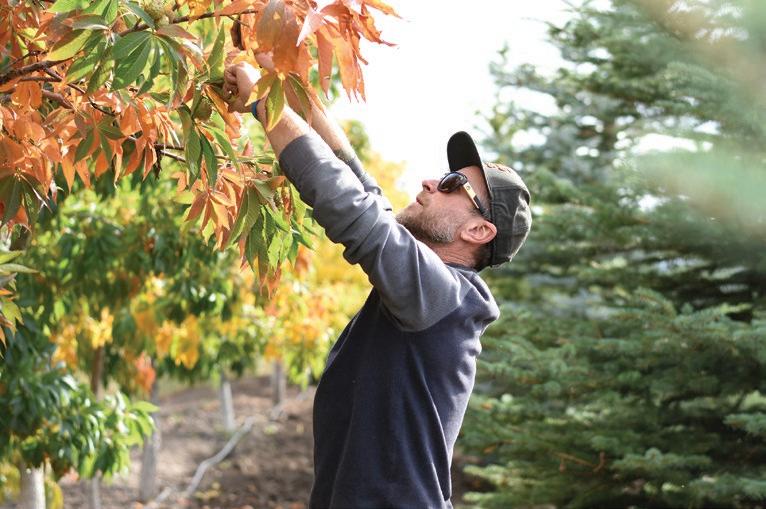
Man vs. machine ...or is it?
If a machine can learn to do human tasks, where do said humans fit in? Professionals possessing knowledge passed down and perfected with hands-on experience might be wondering how a machine powered by AI could learn the nuance of what they do.
Colin Upson, the field manager at Foothills Tree Nursery (FHN) near Calgary, Alta., is curious about the promise of AI, but acknowledges he doesn’t see AI as capable of performing more complex tasks at this time. “I would feel comfortable and can see the benefits of using AI with certain tasks, such as potting plugs or re-potting,” Upson said. “I would still like the actual planting part done by trained people. This is a very important stage of a plant's life, especially recognizing things like girdling roots and how to remove them properly.”
According to Upson, FHN is working with the Southern Alberta Institute of Technology on a project that involves using drones to measure the height of the conifer trees on their 450-acre nursery, but other tasks, like pruning, will continue to benefit from a human touch. “This is a very specialized skill in my mind. When we receive a shipment of bare root trees, we break apart every bundle, inspect for quality, prune and prepare them the best we can for planting. We do this with roughly 10,000 trees a year,” Upson said. “By being so hands-on with every tree or shrub we grow, it helps increase the knowledge of the people working here, and gives them a sense of ownership.”
Data-based decisions
“The database required to prune effectively would have to be astronomical. Things like bud arrangement, whether its opposite or alternate arrangement, are very important when deciding where to make a cut. Branch attachment is another thing that requires a certain level of judgement," Upson said. "Sometimes you make these [pruning] calls based on the tree's history; for example, was it a good growing year or did the tree struggle? As a field manager or owner of a tree farm, the trees almost become like your children or a part of your family.”
Jeff Olsen, CEO of Brookdale Treeland Nurseries (BTN) in Ontario and British Columbia, is very excited by what AI can do to better serve clients and manage inventory.
“When supplying retailers, you're renting shelf space. You're not just making a sale, you have to own that space and manage it. You can only do that with data,” Olsen said. “If you're dealing with a national retailer that has 500 locations, and you sell them 20 products per day, that would be 10,000 lines of information that you would need to slice and dice in order to forecast for the next day and week, and then for a week you have 70,000 lines of information that you either need to hire analysts or have a tool that takes the data, analyzes it, forecasts for you and tells you what your orders should be in order to maximize your opportunity. So that's the sort of thing I'm really excited about. AI, machine learning, Big Data coming in and saying ‘I can take these 70,000 lines of information and
tell you what you need to do.’”
Using AI to process all of that data could also help reduce waste, something Olsen considers a big win. “Typically, we throw out about 30 per cent of our product, either at retail or at the grower site. Imagine how deflating it is for growers to have a big garbage pile that didn’t sell because we forecasted incorrectly?” Olsen said. “If AI can eliminate any part of that, it's only going to add profit to the business.”
How would AI do that? By analyzing the big picture, including historical sales data, consumer buying habits, retail locations and even the weather. “If I know I sell 50 per cent more of something on a sunny Saturday in May than I do on a rainy Saturday in May, and I also know that this Saturday is going to be sunny and that one's gonna be rainy, I can control my inventory flow based on those factors,” Olsen said. “I may be able to do that manually and through intuition, but can I repeat that for 500 SKUs over 500 stores? My brain melts at that point. You can do it manually but AI really simplifies this process.”
Predictive model-making
AI can also help reduce water usage. Dr. Andrew Hirons is a senior lecturer in arboriculture at Myerscough College in the U.K., where he leads a plant sciences research team. His work has focused on tree selection for urban forests and supporting development guides to help select trees for different urban scenarios, particularly in relation to drought tolerance. His goal is to better understand the water use of nursery trees more effectively by gathering data with Internet of Things (IoT) sensors.
Dr. Hirons pointed to the lofty “million tree” planting policies that governments implement and how nurseries growing young trees destined for those initiatives require a great deal of water. Getting the permits to acquire more water is difficult and expensive. “Clearly, water use management is going to need to change over the coming decades because there's more pressure on the water that's available for irrigation. That's only going to get worse as there’s also pressure to expand production to meet policy requirements,” said Dr. Hirons.
“From a business point of view, if you're at your maximum capacity and subject to the irrigation using current techniques, then you can't really grow as a business because you're limited by that resource,” Dr. Hirons
22 | LANDSCAPE TRADES
Credit: FHN Inc.
Colin Upson, field manager at Foothills Tree Nursery near Calgary, Alta.
said. “Whereas if you could make fundamental savings of ten or 20 per cent, then the same volume of water can be deployed to a large number of plants.”
To test this theory, Dr. Hirons has experimented with installing IoT sensors at Hillier Nurseries — the largest tree and shrub nursery in the UK — to monitor and collect data on soil moisture, air temperature, tree growth rates, nutrient levels, sap flow and moisture uptake. This data stream isn’t technically artificial intelligence, but Dr. Hirons says it will provide the architecture for integrating AI into those decision-making processes by deploying predictive models.
“Once we've got that model, we can say, ‘well, what does it look like under the scenario where temperatures are two degrees warmer? What does that do to our water use?’” Dr. Hirons explained. “By stress testing different scenarios, the data might really help a grower make strategic investments.”
Even with all that data, Dr. Hirons says it's better to have a human somewhere in the decision-making chain, even if it's to say ‘I support that decision that the AI's coming up with.’
“Certainly the growers who are relying on the successful growth of plants are probably going to be extremely reluctant to hand over that decision-making process. The logical next stage is to get some real time feedback on how much the crops are using water, but to still have that human in the loop who can help clarify or override the decision suggested by AI.”
The Vineland team also worked on an irrigation project and findings revealed that growers tend to be over-reactive. “The common theme is that growers overwater because it's a little bit better to be overwatering than underwatering. We know that in the application of anything: water, irrigation, spraying for pests, even the amount of fertilizer being used, people typically use more than they should,” Dr. Lynch said. “So AI can help objectively decide the right amount to use at the right time and it can be programmed to take more risks or take fewer risks depending on our growers’ preference. They'll see it objectively.”
Dr. Lynch says AI also applies the learned expertise of a grower and lets the software follow a set of rules. “These AI systems are learning from data that’s available. It’s learning from the way people have done things, but it’s also learning from things that
USING AI TO STREAMLINE YOUR BUSINESS

For passionate growers, like Colin Upson, who want to stay connected to their plants, AI could help streamline administration or other back office chores to free them up to deliver hands-on care across their operations. Here are just a few of the many ways you can implement Artificial Intelligence to your landscaping or horticulture business:
• Communicate with temporary foreign workers with language translation apps
• Engage potential clients and answer frequently asked questions on your website with a chatbot
• Brainstorm ideas and create rough drafts for marketing and blog content
• Edit written content for grammar, spelling and punctuation
• Visualize landscape concepts with generative fill design software
• Measure properties and calculate size, slope and other features, then upload measurements directly to design software
• Automate estimates, billing and follow-up emails
• Track fleet routes, fuel usage, idle time and detect driver risks
• Program cut patterns for autonomous mowers
• Trigger greenhouse operations, such as opening shutters or controlling humidity, based on real-time conditions
• Monitor for pests and deploy drones to destroy them
• Observe large crops for plant growth and development
• Deploy irrigation and nutrient inputs based on sensor data
• Identify plant type through photo recognition
• Command autonomous vehicles to move heavy loads around operation sites



are too much to process. People can’t necessarily consider every single plant individually. But AI can.”
The changing talent pool
The technology still relies on humans to design, implement and manage the AI systems.
“It’s probably going to be 100 years before you have a greenhouse that no one really ever sets foot in and everything is just an automatic shipment. The domain of knowledge is always going to be really important. If I'm a grower or have a greenhouse or orchard, maybe I need to have a person on staff who can basically speak to the robots, or be the AI whisperer.”
Oslen said he already employs a team of brilliant computer scientists in their 20s working on in-house solutions for data modelling.
Olsen also thinks AI could also be used to address the labour shortage. It’s not like people are clamoring over themselves to work in the nursery or the greenhouse business as labourers,” Olsen said.
He encourages his peers to consider the workforce of the future. “Most of the people we're hiring today as entry level start at our company with a university degree. It is rare that people even apply for general labour positions. Entry-level horticulture is going to be more science-based. Twenty years ago, we hired kids to come in and pull weeds. That's not going to be there in the future, and that's okay because that's a crappy job. And that turned people off from the business. So if a machine can do it, you're basically replacing labour that you really couldn't find any way.”
Dr. Hirons feels the successful adoption of AI will require people with a wide range of skills and knowledge. “A data scientist wouldn't necessarily have horticulture knowledge that they could use to turn that raw data into something actionable. It absolutely would need collaborative and interdisciplinary teams because the goal that we're working towards doesn't just involve growers or biologists or mathematicians or software engineers. It involves all of those people,” Dr. Hirons said. “For sure, there's going to be changing roles, and I think in the future there will be data specialists who just work in the green industries. There will be new, interesting opportunities that don't exist now.”
Looking ahead
Using AI is a choice, and plenty have reservations about trusting an intangible system with access to so much data. “I’m sure you can find growers who say “I don’t trust it, it makes me feel like I’m not needed anymore,” Dr. Lynch said. “But my conversations with growers reveal they care about the bottom line. They care about their business and, by association, how that affects their quality of life and the life of their staff. And if a piece of technology helps them get there and it has the return on investment, then they'll go in that direction.”
Dr. Hirons encourages people to be open to the possibilities AI offers. “Be brave and look to embrace the opportunity that it gives us rather than and say, ‘Well, what we've been doing for the last 40 years is going to be sufficient for the future.’ We need to apply much more foresight.”
The adoption of AI in nursery growing is not just a technological shift; it's a cultural transformation. Growers of tomorrow might become cyber stewards, using automation and artificial intelligence to streamline tasks people don’t want to do, and create new ways of working to engage an entirely different talent pool. In the not so distant future, professionals in this sector will need to decide how they’ll evolve to harmonize innovation and tradition in a digital landscape that is no longer in the realm of fiction. LT
Have you implemented AI in your operations? We’d love to hear about it. Share your story with editor@landscapetrades.com.
24 | LANDSCAPE TRADES
Dr. Brian Lynch, director of Horticulture Technology Systems at Vineland Reseach and Innovation Centre in Ontario.
Jeff Olsen, president and CEO of Brookdale Treeland Nurseries in Ontario and British Columbia.
Dr. Andrew Hirons, senior lecturer in arboriculture at Myerscough College in the U.K.


26 | LANDSCAPE TRADES

on growing media
BY JULIA HARMSWORTH
Growers across Canada are leveraging biology to grow strong, healthy plants without compromising sustainability. Creative technologies in growing media — from heroic worms to magic mushrooms, to marine creatures — are making soil filthy rich.
Jamie Aalbers, growers sector specialist at the Canadian Nursery Landscape Association, said growing media are very individualized. Each grower likes to use a particular soil mix, and while most source it from a company, some even mix it themselves. It all depends on the grower’s needs, location and what they’re planting. “Each grower has their own way of doing things,” Aalbers told Landscape Trades
The biggest trend in growing media Aalbers has observed over the past five to 10 years is a reduction in peat usage. Greenhouse flower growers do predominately stick to peat moss, but nursery growers are reducing their use of peat in container growing, preferring bark, wood fibres and other composted materials. Innovative soil mixes that combine peat with wood fibres are increasingly common, as well as ones that use biochar.
“It’s an environmental concern,” Aalbers explained. “When you’re harvesting peat, you’re digging the wetland up, basically. Those wetlands store tons of carbon and when you dig it up and use it as a soil, that carbon is released. And [that’s] not to mention the environmental degradation of the wetland itself.”
Another concern is fertilizers leaching out of plant pots and into the environment. Aalbers said nursery growers
are turning to slow release fertilizers, which are added at the beginning of the grow cycle and release slowly over time, as the plant needs the nutrients. He said most nursery growers use synthetic fertilizers.
Innovative individuals across Canada are contending with these concerns, using biology to formulate interesting solutions. One Ontario-based company, for example, is making creative soil mixes — without wood fibres.
WORMS WEAR CAPES
Pure Life Soil digs into earthworm castings — in less elegant words, earthworm poop. The company is the only Canadian Food Inspection Agency (CFIA)-certified worm casting producer in Canada, selling three soil mixes made of the stuff. Their 100 per cent organic earthworm castings are otherwise known as “black gold.”
About 60 million earthworms currently live in the company’s 50,000 square foot facility in Toronto, Ont. Staff place them in cooled flats and feed them soil, and in return, the worms produce fertilizer (castings) with high nitrogen levels. The worms also produce microbes and beneficial nematodes: naturally occurring microscopic roundworms that promote healthy soil and trap carbon.
“[Beneficial nematodes] are what gets life going in gardens, in crop fields, in


greenhouses. That’s what you need,” said Helen Stailos, Pure Life Soil sales director. “[We believe] earthworm castings are the healthiest and most nutrient-dense fertilizer you can use. It’s the best fertilizer known to humankind.”
Stailos said anything grown with worm castings will have a strong root structure, which, in turn, gives plants the best size, colour and fragrance. And, unlike cow or sheep manure, which contains hormones and greenhouse gases due to the animals’ diets, worm castings don’t contain any harmful chemicals.
“Earthworms have the ability to eat toxic metals and toxic anything, and when it passes through a worm’s body, it turns into a pure, filtered byproduct that is odourless. We call it clean dirt. I’ll touch it, and then eat my sandwich,” Stailos said.
In the spring, pickers will grab their headlamps and head up north to collect more worms and bring the facility’s stock to 250 million. The worms are picked at night under specific weather conditions; pickers must check the moon cycle and wind patterns beforehand. Pure Life uses Canadian nightcrawlers, European nightcrawlers and red wigglers — the latter two of which eat half their body weight each day.
“They’re voracious eaters. They’re superheroes of the planet. When we go to schools and teach children, we tell them, ‘They’re little superheroes. They should be
wearing capes,’” Stailos said.
The worms’ other superpower is carbon capture. Their castings detoxify dead soil and support a healthy soil ecosystem, promoting vitality and helping the plant trap carbon through photosynthesis. For Stailos, this is a reason to choose organic growing media over synthetic substances: they wake up the soil.
“The worm castings are the key,” she said. “There’s a symbiotic communication under the ground happening with fungal activity, and the roots talking to each other, and communicating with the air above. You get a healthy and harmonious exchange of carbon and oxygen. That’s when the magic starts to happen.”
SHAKING HANDS WITH FUNGI
Ontario-based Root Rescue also leverages symbiotic relationships. The company’s Transplanter product harnesses the power of mycorrhizal fungi to put life back into soil. It’s made of 18 different fungal species, with no added chemicals or synthetic fertilizers, and is CFIA-certified. It can be applied while planting or injected into the roots of previously planted trees and shrubs.
This type of fungi — also called “mycorrhizae” — has a symbiotic relationship with plant life. Plants draw carbon dioxide from the atmosphere and convert it into sugar through photosynthesis. They keep much of this sugar to grow, but send 40 per cent deep into the soil to feed the fungi. In return, the fungi gives the plant water and nutrients. Bob Reeves, owner of Root Rescue, describes this exchange as a “handshake.”
“If you’ve ever wondered how a forest lives, it’s mycorrhizae,” Reeves said. “What mycorrhizae does is make miles of roots that find water nutrients. They bring it into the tree system, and they have an agreement with the tree. The tree, through photosynthesis, makes sugar, and it feeds them, and that’s what makes the spores.”
Root Rescue’s products restore the natural organisms that promote this process and create a healthy, filthy rich soil environment. The root only needs to be rescued once; when it’s treated, it
keeps the nutrients forever and grows healthier. Root Rescue reintroduces something that’s missing — the fungi — and re-invigorates the plant’s natural carbon capture process. So, it isn’t just carbon neutral; it’s carbon positive.
“All those roots are carbon capture systems. When the frost hits new roots, they all die, capturing that carbon in the ground where it belongs. When the soil warms up, those spores make all new ones. And if the tree’s alive, those spores will make mycorrhizae. It’s pretty amazing stuff,” Reeves said.
Jamie Aalbers has seen exponential growth in the use of mycorrhizae in the past five to 10 years — especially in transplanting, to improve the success of trees that are moved from container to landscape. The fungi is also being added to soil mixes to improve soil health, with other new biological amendments. MustGrow in Saskatchewan, for example, gained U.S. Department of Agriculture (USDA) organic approval for a mustard plant-based soil amendment this past October.
Root Rescue also reduces the amount you need to water your plants, protecting the environment — and your wallet. Reeves said mycorrhizae can find 30 to 40 per cent more water from the soil than the root can by itself. Plants without a healthy soil ecosystem, by contrast, are at a “tremendous disadvantage” and are more likely to die during a drought.
Like Stailos, Reeves believes synthetic fertilizers are unsustainable. He said they damage the ecosystem and are inefficient. A farm may purchase 100 kilograms of synthetic fertilizer for a soybean field, for example, but only a “paltry” amount of that fertilizer actually ends up in the soybeans. The rest leaks into the ecosystem, damaging waterways.
Because synthetic fertilizers are salt based, they can also dehydrate the soil, reduce the plant’s ability to take in rainwater and kill the natural organisms in

28 | LANDSCAPE TRADES

*E&OE, some conditions apply. See website for details. NEED APPRENTICES? Up to $20,000* in help is available right now! Eligible small and medium-sized businesses can apply for support from the Canadian Apprenticeship Service. In addition to the grant, build your future workforce with: • free access to employer-apprentice matching services; • free access to mentorship programs; and • free access to diversity and inclusion training. Apply for your grant at ApprenticeSearch.com/CAS
the soil that support the plant’s growth, Reeves claimed. Then, the plant gets addicted to the synthetic fertilizer, depending on it to replace what it’s killed. Organic growing media — like worm castings — do the opposite. They animate the plant.
“It’s the old paradigm: Do you want to give the hungry man the fish or do you want to show him how to fish? Once you give the plant back its fishing lures and technology, it can feed itself,” Reeves said.
SWIMMING IN A CIRCLE
Acti-Sol, a natural fertilizer company based in Quebec, gives the hungry man — or the hungry plant — the fish. The company supports environmentally conscious gardening by recycling waste and promoting alternatives to chemical fertilizers. It sells a series of marine fertilizers — shrimp flour, granulated algae and hydrolyzed fish — as well as pure hen manure.
The hen manure came first, when the company decided to do something sustainable with the waste their eggproducing hens naturally made. The owner went to Europe and came back with a new technology: a huge dryer that uses the heat from the hen house to dry the manure. It’s then recycled into fertilizer, with added natural ingredients like bone meal. No other source of energy or machinery is used to dry the manure.
“It’s a good way for us to divert a product that would otherwise sit on land. Manure left to the elements will compost and can become a polluting bomb,” said AnnySandra Hamel, Acti-Sol representative. “It’s all part of the circular economy.”
The hydrolyzed fish solution uses a cold hydrolysis process to provide necessary nutrients and preserve amino acids. Hydrolysis is a chemical reaction in which water breaks down chemical bonds. When sprayed on a plant, the solution encourages healthy bacterial growth in its ecosystem, stimulates root growth and flowering, and increases the Brix — sugar — rate in fruits and vegetables.
The shrimp flour and seaweed products also stimulate microbial life in the soil, promote rooting, correct nutrient deficiencies, and restore soil fertility and water retention capacity. Hamel said the algae is picked sustainably; it’s cut at the top, not torn out at the root. Sustainability is important to her and, like Stailos and Reeves, she doesn’t believe synthetic fertilizers are a healthy medicine.
“When you’re sick and you go to the hospital and you’re plugged into an IV, you get an immediate boost. But really, what you should be doing is eating properly, you should be exercising and you should be sleeping right. So, it’s kind of the same. We need to feed the soil. That’s what organic fertilizer does,” she said.
NVK Nurseries also sees the sustainable merits of our aquatic friends. The wholesale nursery, based in Southern Ontario and serving clients across Canada and the Northeastern U.S., keeps four 500-gallon tanks of koi fish on their property. The water feeds into growing beds of aquatic plants, which are fed by the fish’s waste.
“The nitrates get taken out by the plants, and then the plants clean the water and then it’s filtered right back to the fish tanks again,” said Derek
4 Season Clean.
What started as an efficient method of cleaning large surface areas during the warmer months, has proven itself an invaluable tool.
If you need a broom for seasonal applications, then you will appreciate the added benefits an HLA broom can provide all year.
Contact your local dealer to get a clean sweep all year long.
HLAattachments.com
1.866.567.4162
Vanderkruk, NVK perennial manager and part-owner. “So, it’s all a self-contained, bound system where we don’t have to add any fertilizers. [The elements] all work together to keep each other’s environments growing well.”
The fish-fertilizer system has increased the plants’ lifespan and allowed for propagation. Before the koi fish moved in, the tanks were home to over 500 tilapias. The fish grew from two inches to two pounds before they became inactive, and the nursery’s staff took them home for dinner. Tilapia grow faster (and perhaps taste better) than koi, but don’t thrive in cold winter temperatures.
This circular, no-waste system is a blueprint for NVK; the Vanderkruk family tries to run the business as sustainably as possible, so it lives for generations to come. They limit their use of artificial fertilizers, focus on what each individual plant needs, use regenerative cover crops, have their own composting facility and work to rejuvenate their soil.
Jamie Aalbers said the nursery industry is contending with their impact on the environment. Like NVK, nurseries across Canada are talking about best practices and making improvements to field production. He noted that nurseries and growers also understand the inherent environmental benefit of the plants they grow. Each tree, shrub and flower wears a cape, and new technologies in growing media only aid their mission.
“We're always trying to look towards the next generation. We're just being caretakers. That's our calling in life, too," Vanderkruk said. LT


30 | LANDSCAPE TRADES











MARCH 2024 | 31 COMMERCIAL GRADE. ALL DAY POWER. 25% MORE NOW WITH MOWING POWER! We invented All Day Power and are 100% focused on electric mowing. Only Mean Green has over a decade of real-world PROVEN results! SCAN CODE TO SCHEDULE YOUR FREE DEMO! Find a Dealer at: MeanGreenProducts.com TAX C $REDITELIG IBLE USA ENGINEERED AND BUILT Assembled in the USA using domestic and foreign parts. Durable Reliable Noise Reduction Zero Emissions Cut Quality Operational Savings
MISSION: PRECISION
HOW RTK TECHNOLOGY CAN HELP LANDSCAPE TRADES PROS HIT THE MARK WHEN IT COMES TO TURF CARE
BY KALI PEARSON
While most trade show exhibitors are quite happy to walk away with a few solid leads and a pile of badge scans, Steve Uljua, senior outdoor robotics manager at Kress is just happy no one is yelling at him anymore.
As part of the training team for Kress’ robotics division (and before Kress, Husqvarna), Uljua has been in the robotics game since 1998 and can remember when he used to get nothing but shade from landscapers on the trade show floor.
“There were years and years of landscapers coming by the booth, literally screaming and hollering,” he said. “They said that robotics were

taking away business and making landscapers a thing of the past.”
These days, it’s a much different story. Robotic mowers are gaining wider acceptance in the market — particularly for municipalities and large commercial properties.
Thanks to strides in technology, robotic mowers are far more accurate. Batteries last longer. Many municipalities are cracking down on noise pollution and emissions. Labour is hard to find — and higher fuel costs makes sending crews to remote locations costly. Put it all together and robotic mowers are having a real moment.
32 | LANDSCAPE TRADES
THE NEW ROBOTICS
While robotic mowers themselves aren’t new, they haven’t always delivered professional-quality results. Integrating them into the maintenance workflow was clunky. First a wire would need to be stapled or buried around the perimeter of the property. Then the unit would then rove (rather aimlessly) until it hit an obstacle or ran out of battery. Much like first-generation Roombas, they were novel… but not exactly effective.
Today, manufacturers including Kress, Husqvarna and Green Machines are offering robotic mowers that leverage Real-Time Kinematic positioning (RTK) technology, with the promise that they can mow almost as well as (or better than) your average human. Put very simply, RTK works a lot like the GPS found in navigation systems… but better. While GPS technology provides accuracy within about a metre, RTK layers in surveying data that delivers greater precision. The satellite and the mower are both

moving objects and with RTK, a fixed antenna is installed to determine the exact positioning of the mower. "This technique provides centimetre-level accuracy in seconds,” said Courtney Beall, senior brand manager, Green Space Professionals, at Husqvarna Group, which has long been a key player in robotics.
RTK technology was initially developed for military applications. Next, surveyors and large-scale industrial farming operations adopted it. Most recently, automotive companies have used it to develop autonomous vehicles. “With Tesla and all these people who are working with that technology, it just kept driving the price down,” said Uljua.
Of course “down” is relative — and with mowers costing from $2,300 for a smaller unit to over $13,000 for machines capable of moving up to nine acres, no one is saying entire fleets of lawnmowers

will be replaced immediately. But Paul Ronan, executive director of Parks Ontario, says that these machines are definitely “here to stay” — especially when it comes to areas that are remote or need a very specific cut to be maintained daily.
Ronan cites a cricket field in Kitchener, Ont. “It’s a bit of a pain to get to, and players wanted a very specific height of cut maintained every other day,” he said. The City of Kitchener purchased one of these new generation robotic mowers — and Ronan says it works brilliantly.
“The quality of the cut is very good. What I’m seeing is that they are very dependable and don’t require much maintenance,” says Ronan. “Yes, you do need to sharpen the blades, but the big thing it saves you on, is the manpower.”
MARCH 2024 | 33
continued
>

Speaking of low maintenance, these mowers can be tracked live via phone or computer — and today's units will send an error message your way if it experiences a breakdown or malfunction. The machines can even be programmed to drive right onto their charging unit at the end of the day. “We see people building little ‘dog houses’ for them,” says Ronan. If anyone tries to pick one up, it shrieks like a banshee (and even intrepid thieves will find they can only be operated with a PIN).
Right now Ronan suspects most of the early adopters are municipalities and landscapers servicing more remote properties where the terrain is predictable, but he believes greater adoption will grow quickly now that technology is living up to its promise.
MORE MOWING, LESS ENVIRONMENTAL IMPACT
Uljua also mentions that daily or almost daily mowing has been demonstrated to eliminate or reduce the need for overwatering and fertilizing — great news
for our waterways and for those wishing to leave a lighter footprint. Studies from University of Kentucky and University of Georgia have demonstrated that by constantly trimming grass a little bit at a time, the lawn becomes healthier — and the small pieces of cut grass decompose quickly, putting nutrients right back into the soil. In the same studies it was determined that these mowers resulted in about 35 percent less water used to keep a beautiful lawn, depending on where you are in North America, said Uljua.
This is obviously great news for those managing very large or remote sites, but what about landscape crews serving smaller commercial or residential sites?
Ronan says there is still some resistance in this market. After all, why would a consumer continue to pay a crew if the mower will do the work “for free”? He says there’s also a potential downside for unionized companies, which have to disclose use of robotics and demonstrate that they are not taking away existing jobs.
“The reality, though, is that I have not
heard of a single example of this yet,” said Ronan. “Municipalities and companies are so short-staffed they are far more likely to be trying to hire people than trying to fire them.”
Uljua is seeing a similar story on the trade show floor. “Now, landscapers are lining up to ask questions,” he said. “They understand that the robots are not going to trim hedges, they’re not gonna fertilize, they're not gonna do the edging and the blowing and all the other work that needs to be done,” he said. “They can cut checkerboards, stripes going north, stripes going sound, stripes going left or right, but they just mow grass.”
And for those of us hoping for a little robot help in other sectors, Uljua is already excited about what might be coming next — from larger mowers to snow ploughs. “Affordable RTK has opened up the floodgates,” he said. “I'm glad I've been in business long enough to see both ends of the spectrum — and I really do love going to shows more, now that people see the positives.” LT
34 | LANDSCAPE TRADES
Photo credit: Husqvarna
MARCH 2024 | 35
GROWINGYOURBUSINESS
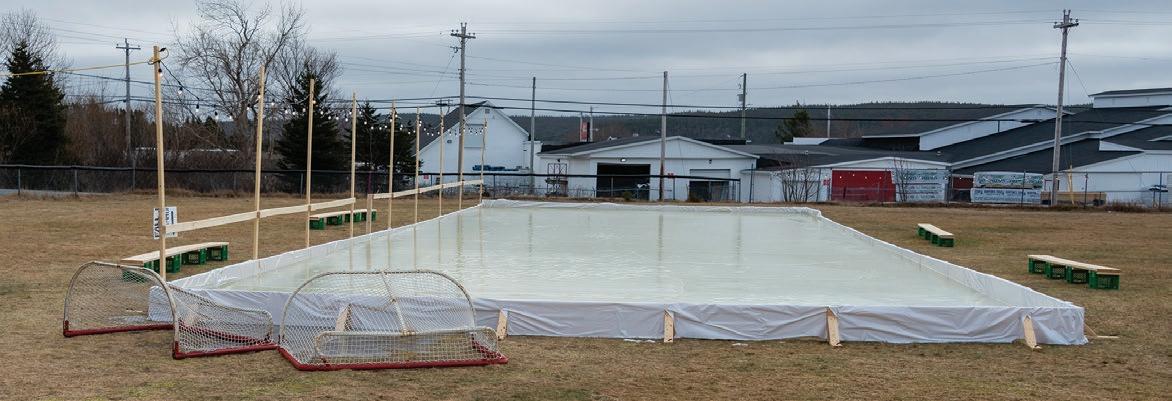
Low snow
BY GRANT HARRISON
OUR NEXT-DOOR NEIGHBOUR builds the most amazing ice rink in his backyard every year. It has curved corners, lights, painted two-foot high boards all the way around with netting to catch stray pucks. The only thing missing is a scoreboard and lines in the ice, though I expect those are coming. It’s a work of art. But this year, it’s been more like a wading pool than an ice rink. The weather this year has been unlike anything I can remember in all my years in landscaping. As I write this, it’s February 7 and 9 C in Toronto. There are no snow piles and no frost in the ground. Many of our clients that do snow and ice removal over the winter season are concerned about what this means for their business, both this year and in the future. While a light winter may have its pros and cons, one thing is certain — we need to adapt and make changes in our practices and snow contracts to survive in the face of low snow seasons.
Let’s talk about some of the pros of a low-snow season:
• Reduced equipment damage and wear: With less snowfall, snow removal equipment experiences less usage, resulting in less wear and tear.
• Time to prepare for the spring: Instead of focusing on snow removal, contractors can use this time to prepare for the upcoming spring rush, ensuring everything is ready to go for the green season.
• Rested staff: With fewer snow events to tackle, the staff can rest and recharge (if it’s mild and sunny, all the better!). This reduces the risk of burnout and enhances overall performance when snow events do happen.
• Cost savings: Light winters lead to reduced material and labour costs. Lower maintenance expenses can significantly impact the bottom line, allowing for increased profitability and/or reinvestment opportunities.
• Shovels in the ground sooner: A light winter allows contractors to get a head start on their landscaping projects, giving them a competitive edge in attracting more clients and therefore, more revenue.
Now, let’s talk about some of the challenges:
• Lack of hours for hourly-based staff: With fewer snow events, hourly employees may experience reduced hours, which can impact their livelihood. It is crucial to find ways to keep them engaged and provide them with alternate tasks.
• Decreased high-margin revenue: Low snow seasons may result in limited revenue from services such as snow removals, relocations and salting applications, which are typically high-margin services for contractors.
• Client dissatisfaction: Some clients may question the value of their all-inclusive snow contracts if they receive minimal snow removal services. It is vital to manage client expectations and communicate effectively, ensuring a strong client-contractor relationship.
• Keeping salaried/guaranteed-hour staff busy: With little or no snow, keeping these employees busy can be a challenge, as well as a frustration for business owners.
36 | LANDSCAPE TRADES
How to adapt
Since spring is quickly approaching, here are some suggestions for keeping staff busy and preparing for a great start to the green season.
• Keep staff engaged until spring startup: Use this time for spring clean-ups, enhancement quotes, equipment cleaning and servicing, staff training and attending industry events. Taking care of other maintenance tasks and preparing for the upcoming season helps maintain staff productivity during low snow periods.
• Hybrid contracts: Consider implementing a hybrid contract structure that shares the risk between contractors and clients. This structure guarantees a certain number of plows and salting applications, with additional services charged separately. This way, both parties benefit in low or above-average winter conditions.
• Flexible contract adjustments: Develop contracts that allow for adjustments based on weather patterns. By having a guaranteed portion of winter contract revenue, contractors can cover their equipment costs and overheads. The remaining portion can be allocated for repairs, maintenance and labour during snow events.

In adapting to below-average snowfall seasons, it is essential for snow contractors to embrace change, adjust contract structures and find ways to engage their staff effectively during low snow periods. By being proactive and flexible, businesses can weather the storm (or lack thereof) and continue thriving, even in the face of unpredictable weather patterns. LT






Next Day Delivery Anywhere in the GTA BUY DIRECT FROM THE GROWER CLOSEST SOD FARM TO THE CITY 10378 Highway 48 in Markham
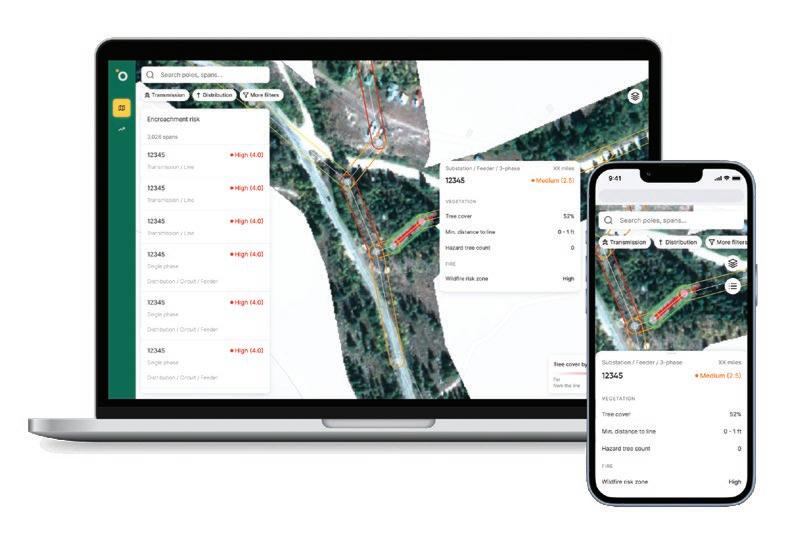
How satellites and AI ignite hope in Canada's battle against wildfires
BY DR. NADINA GALLE
IN 2023, Canada faced a wildfire season that seared itself into the nation's history books — a relentless onslaught of over 6,500 fires consuming nearly 19 million hectares, and causing unprecedented destruction.
As Canada grapples with the aftermath, the conversation around innovative solutions takes centre stage. A dedicated effort is now underway to unravel the intricate causes of wildfires and institute preventative measures. But wildfires are inherently complex, requiring a comprehensive approach. This involves reflecting on current forestry practices, development in fire-prone areas, and, as I will discuss with you today, the integration of state-of-the-art technologies.
While wildfires are a natural part of our landscape, our landscapes are no longer natural. Long-term mismanagement of forests, compounded by anti-logging policies
on federal and provincial lands, has resulted in the accumulation of dead and dying trees. This abundance of flammable material not only acts as dangerous fuel for wildfires but also hampers the forests' capacity to sequester carbon. The consequence is a dangerous cycle where dead trees become fuel for megafires, releasing carbon emissions that impact regional and global climates, contributing to a chain reaction of climate change-related events and further wildfires.
Addressing catastrophic wildfires demands a multifaceted solution, requiring a fundamental shift in perspective towards coexisting with fire, implementing healthy forest management practices and reducing triggers for wildfires. Natural Resources Canada reports that approximately half of wildfires result from lightning strikes, which is challenging to control except through
the reduction of fuel loads. However, the remaining half, largely attributable to human activities such as conflicts arising between vegetation and power lines, presents a tangible opportunity for intervention.
This prospect forms the heart of Amsterdam-based Overstory's mission. Leveraging satellite technology and artificial intelligence, Overstory focuses on vegetation management, particularly in proximity to power lines. This approach holds critical significance in safeguarding utility infrastructure, as overgrown vegetation poses not only a threat to power systems but also a substantial risk of wildfires. Electric cooperatives, utilities and landscape professionals can gain proactive planning capabilities by employing a comprehensive inspection plan.
Historically, landscape managers have
38 | LANDSCAPE TRADES INTERNETOFNATURE
adhered to a time-based trim cycle, whether every five or 10 years. Most utility companies have “line walkers,” people who walk along the power lines or get reports from crews working on the lines if they notice anything wrong. But checking the lines thoroughly by walking them regularly can take a long time, usually between 18 months to two years. Plus, because we're all human, mistakes can happen and the crews might miss some potential risks during these checks.
It was an approach that was effective enough until more frequent and intense droughts and heat waves heightened wildfire risks. The need for a risk-based strategy, integrating vegetation intelligence, became evident in the experiences of utility companies like Holy Cross Energy in Colorado and Sho-Me Power Electric Cooperative in Missouri.
Holy Cross Energy's goal to transition to a risk-based program by 2025 underscores the importance of real-time insights, especially in regions grappling with severe droughts. Similarly, Sho-Me Power Electric Cooperative's adoption of vegetation intelligence in 2021 eliminated the need for traditional aerial surveys, resulting in targeted vegetation removal without additional budgetary strain. While it’s impossible to quantify how many wildfires these actions may have prevented, utilities find reassurance knowing there’s little likelihood of wildfires erupting from their power lines.
The use of technology in wildfire prevention goes beyond just removing vegetation. Overstory is actively working on a satellite-based system to identify tree species, understanding the importance of the type of tree in the equation. Some tree species have properties that resist fires, while others, some labeled as invasive, increase the risk of wildfires. This specific approach allows those managing landscapes to concentrate their resources on areas with a high risk of wildfires. Building this system has been a dedicated effort, relying on the expertise of arborists and landscape professionals, but it has become a crucial tool in safeguarding both the right-of-way and biodiversity simultaneously.
While it's clear that satellites and artificial intelligence won't single-handedly resolve the country's wildfire crisis, they emerge as indispensable tools for utility companies and landscape professionals navigating the complex intersection of catastrophic wildfires, extreme weather events, power
outages and the ever-evolving climate. The shift toward a more data-driven approach, as facilitated by Overstory's innovative solutions, holds promise in reshaping the narrative of wildfire prevention, offering a tangible path forward in protecting Canada's forests, homes and communities.
For a deeper dive into the intersection of technology and wildfire prevention, check out Episode S2E8 of the Internet of Nature Podcast with Indra den Bakker, founder and CEO of Overstory. LT

DR. NADINA GALLE
Nadina spotlights Internet of Nature (IoN) technologies and practitioners making a difference in how we can optimize soil health, manage urban forests, create liveable cities, and everything in between. To learn more about the IoN and to catch episodes of the Internet of Nature Podcast, visit: nadinagalle.com.
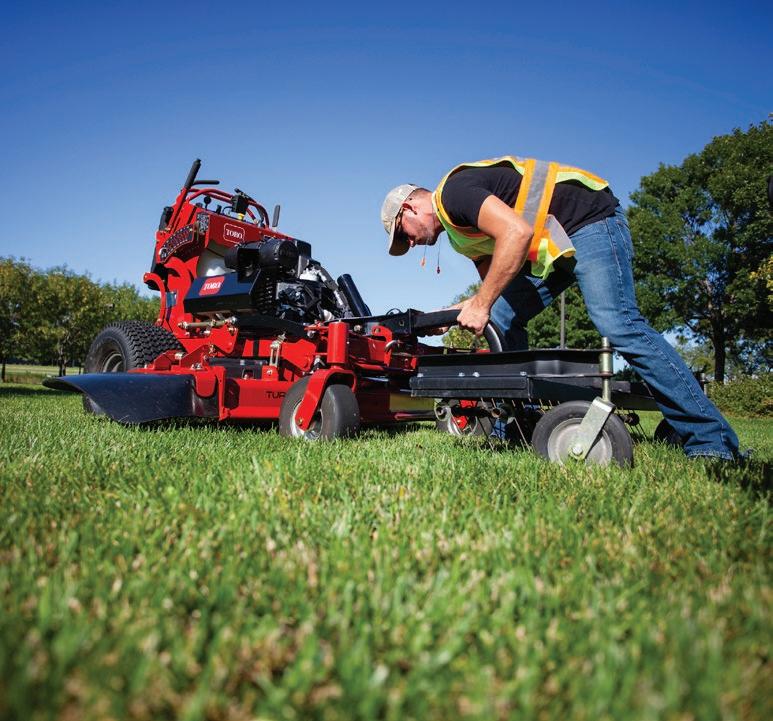



MARCH 2024 | 39
ANY JOB. ANY SEASON. Mow. Mulch. Aerate. Sweep. Plow. Throw snow – you name it. Whatever you need to do fast and efficiently, Toro GrandStand MULTI FORCE and its 10 versatile attachments elevate productivity all year round. Switch attachments, not machines. Find a dealer at Toro.ca/local GRANDSTAND® MULTI FORCE® Purchase 1 GrandStand MULTI FORCE machine + 1 attachment = Fleet Status Or choose from the full breadth of our industry leading equipment. TORO IS THE WORLDWIDE LEADER IN TURF MANAGEMENT AND IRRIGATION SOLUTIONS Up to 24% off with Toro’s Fleet Program


The element of surprise
Unusual plants to delight your clients — and support biodiversity
BY HEATHER JERRARD
SPRING WILL BE HERE before we know it — and it is essential to utilize a range of different natives, nativars, trees, shrubs, perennials, wildflowers and even annuals to support biodiversity in the landscape.
Before we as landscape designers rush to put in a row of 'Goldmound' Spirea or 'Annabelle' Hydrangeas in a client's garden, might I suggest some more interesting, readily available alternatives?
As much as I love these two plants, there are so many others that can inspire intrigue and display unique characteristics that spark conversation. As a self-proclaimed plant nerd, it gives me such joy to see something new or unexpected in a garden. The plants listed below are ones that I've seen or personally used in designs that are visually interesting, are fairly easy to maintain and perform well in the landscape.
Full sun to part-shade
• Fothergilla (shrub) is one of my personal favourites! This plant features white bottlebrush flowers in spring, silvery blue-
green foliage in summer and beautiful red, orange and yellow tones in fall.
• Bergenia (perennial) has red, pink and white flowers in spring, as well as large, coarse-textured glossy green leaves in summer that turn reddish burgundy in fall. It also holds its leaves through winter.
• 'Rozanne' Geranium (perennial) is airy and fine textured. This is a great filler with a long bloom time and is droughttolerant once established.
• Oakleaf Hydrangea (shrub) features large, deep-toothed leaves that change colours with the season. The bark is highly textured providing winter interest and requires minimal (if any) pruning or deadheading.
• Camassia (bulb) is a gorgeous North American native showcasing spikes of blue-purple blooms and provides a great source of pollen for many of our beneficial insect friends.
• Blackberry Lilies (perennial) have leaves similar to other lilies but the flowers are tiny and delicate. In fall, the flowers
become seed heads that look like blackberries which make for excellent cut flowers in arrangements.
• Amsonia (perennial) is a compact, shrublike perennial that puts on a show in three of four seasons. Leaves are chartreuse in spring, turning deeper green in summer alongside nearly true blue flowers. In fall, the leaves become a cloud ablaze with oranges and yellows before dying back.
• Curly parsley & purple basil (annual herbs) are two annuals that I almost always add to my clients' planters. The curly, highly-textured parsley adds visual interest and is beneficial to many good bugs. The glossy, purple basil adds an unexpected, yet welcoming fragrance and texture in planters.
Full to part-shade
• Hakonechloa (grass) is a mounding grass which provides visual interest and movement in the garden. The golden and variegated cultivars brighten dark areas in a shade garden.
40 | LANDSCAPE TRADES FEBRUARY 2024 | 40
DESIGNERSCORNER
Hepatica 'Rozanne' Geranium
• Cimicifuga and Actaea (perennials) are two plants available in deep burgundy foliage colours which can add excellent contrast in an otherwise green garden.
• Barrenwort or Epimedium (perennial) is a versatile groundcover showcasing purple, yellow, pink or red blooms above green, pointed heart-shaped leaves that turn red and burgundy in autumn. An excellent choice for garden areas around the base of large, established trees.
Full sun
• Baptisia australis or false indigo (perennial) is a nitrogen-fixing legume with a flower structure similar to a lupin. Usually it has blue, yellow or purple blooms though it is also available in white, orange and pinks. It maintains a tidy shape and is great for small spaces.
• Hepatica (perennial) is a spring ephemeral with deeply lobed leaves and stunning purple-blue flowers. It is one of the first woodland wildflowers to bloom and is native to Ontario.
• Penstemon (perennial) is an upright perennial native to many areas of North America. The blooms are nearly pure white and are a host for a wide range of beneficial insects.
• Echinops and Eryngium (perennials) are almost true blue, globular flowers that provide excellent texture and contrast in summer and fall gardens. The silvery, spiny leaves make a bold statement when surrounded by smooth, green foliage of other plants and will remain upright under the weight of snow for winter interest.
• Tall verbena or Verbena bonariensis (annual) is one I personally fell in love with when I saw it in the gardens at the Royal Botanical Gardens in Burlington, Ont. The purple flowers seem to float above the foliage adding movement to planter and pot displays.
• Gaura (perennial) has one of the longest bloom times I've seen for a perennial. The fine-textured foliage and flowers are scattered along the long, airy stems and are reminiscent of fairies or tiny butterflies. Flowers are red, white, pink or a combination of all three. LT
What favourite plant brings you joy, adds visual interest throughout the seasons or is something you think is under-utilized in gardens? Let us know by emailing editor@ landscapetrades.com

HEATHER JERRARD is a landscape designer and owner of My Landscape Artist in London, Ont. Follow her on Instagram @mylandscapeartist.


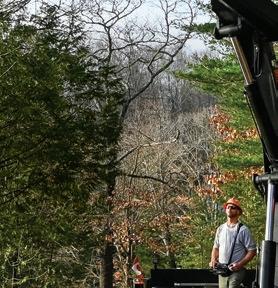

MARCH 2024 | 41 ONE OPERATOR. ONE HIAB. JOB DONE. Canada’s #1 Cranes, Forklifts + Hooklifts 888 799 4422 l info@atlaspolar.com At las Polar IT ’S A LL A BO U T Q U A L I T Y IT’S ALL ABOUT QUALITY™ AP-LANDSCAPE_TRADES-1-2pIsland-Aug_Sept_NewSize.indd 1 2021-07-27 9:29 PM
Photos credited to Anna G. via Unsplash

Back in 2009, Toronto City Council, under the leadership of Mayor David Miller and Deputy Mayor Joe Pantalone, took a major step forward towards sustainable urban development. Toronto became the first major city in North America to adopt a Green Roof Bylaw. The Bylaw mandates green roofs on new buildings, provides an incentive program for existing buildings and creates a standard for the construction of all green roofs. The Bylaw was the result of over a decade of lobbying, research
and education by Green Roofs for Healthy Cities, an industry group formed by Steven Peck, GRP, with a mission to develop the industry across North America. Similar policies have since been adopted by cities across North America, including Denver, San Francisco and New York. In Canada, Montreal and Gatineau have implemented a similar set of requirements.
The Green Roof Bylaw addresses environmental concerns associated with urbanization, such as the urban heat island

42 | LANDSCAPE TRADES
CNLANEWS
GREEN ROOF BYLAW KEEPS ON GIVING Date: Apr 11, 2023 Filename_ Version# Main Office & Yard: 8081 Woodbine Ave. SE Corner Woodbine/407, Entrance off Miller Ave. Office & Yard: 125 Langstaff Rd E., SE Corner Yonge/Hwy 7-407 Manufacturing Plant: 12350 Keele St., Maple www.beavervalleystone.com t: 905-886-5787 or t: 416-222-2424 A WIDE SELECTION OF NATURAL STONE AND PRECAST CONCRETE PRODUCTS YOUR NATURAL STONE SOURCE We Deliver! @BVSLimited beavervalleystone
TORONTO'S
effect, poor air quality, lack of accessible green space and biodiversity loss. The Green Roof Bylaw and the Eco-Roof Incentive Program align with the objectives of the City's climate action strategy, TransformTO, which aims to achieve netzero greenhouse gas emissions by the year 2040. By requiring and providing incentives for green roofs, Toronto sought to create a more sustainable and resilient urban environment. There are few, if any, public policies that can be implemented by local governments which deliver so many benefits for so little investment, and which provide ROI for building owners as well.
roofscape. The incentive program has resulted in the installation of 614 green roofs, contributing to the creation of 1.12 million square metres of green roof space. More than 1,000 green roofs have been constructed thus far, significantly reducing energy consumption by an estimated 2,200 megawatt-hours per year helping to avert 416 tonnes of greenhouse gas
green roofs not only to comply with regulations, but as a way to enhance the overall quality and value of buildings, such as by providing high quality amenity space for building occupants. Accessible and even only visually accessible green roofs have been shown to improve the real estate and rental value of properties and the health and wellbeing of those who have access to them.

The Bylaw applies to new commercial, institutional and multi-unit residential developments with a gross floor area exceeding 2,000 square metres and new additions to existing structures if the gross floor area surpasses 2,000 square metres. The green roof coverage requirement is between 20-60 per cent of the available roof space. All agencies, boards and commissions of the City also have to implement green roofs on their new building projects.
Since 2009, the Toronto Green Roof bylaw and the Eco-Roof Incentive Program has been quietly greening Toronto's
emissions annually. The green roofs have also diverted over 18 million litres of stormwater annually. In 2023 alone, 43 projects were successfully completed, resulting in an additional 78,000 square metres of green roof space. There are a tremendous number of benefits associated with the program, not the least of which are the employment opportunities for design professionals, contractors, manufacturers and maintenance personnel.
Many landscape architects, architects, engineers and developers have embraced
Green roof technology continues to evolve, both in terms of the plants and growing media used to support biodiversity and food production, as well as integration for greater stormwater management benefits as in the case of blue-green roofs which provide additional stormwater retention and detention benefits.
To learn more about evolving green roof and wall technology, you’re invited to the 20th anniversary celebration of CitiesAlive, Nov. 6-9, 2024, in Toronto, Ont. The event will provide a unique opportunity for landscape architects and other designers to learn, connect, engage and leave with tools that will help them use their clients' roofs to future-proof their communities.
To learn more, visit citiesalive.org or greenroofs.org.




MARCH 2024 | 43
PHOTO IMAGING | CAD | ESTIMATING | 3D RENDERING NIGHT & HOLIDAY LIGHTING | FREE COMPANION APP Design | Communicate | Excite 816-842-5551 sales@prolandscape.com prolandscape.com
CNLANEWS


CNLANEWS
CNLA HOSTS INAUGURAL 2024 LEADERSHIP SUMMIT
Switching gears during a week of winter board meetings at Hockley Valley in Orangeville, Ont., the Canadian Nursery Landscape Association (CNLA) hosted its inaugural 2024 Leadership Summit on February 6, featuring a selection of keynote speakers who shared information about navigating an unusual labour market, mitigating insurance liabilities and fostering a love of plants through marketing.
Nancy Healey, Employment Social Development Canada, shared up-to-date employment numbers from across Canada. Although Canada’s economy has experienced little growth over the past year, Healey noted the current economy is in a rare situation in which a lagging economy isn’t resulting in fewer jobs being available.
Jennifer Wright, Canadian Agriculture Human Resource Council (CAHRC), followed Healey’s presentation with more jobs data, sharing figures from their recently completed labour market research. Among the CAHRC’s findings is that the average age of employees is rising. “We have an aging workforce,” Wright said, adding that the average age of employees in agriculture is 58.





“Every industry in Canada right now seems to be facing a labour shortage for many of the same reasons around retirement and growth,” she continued. There are $500 million in lost sales in the nursery landscape and floriculture industry because of the number of job vacancies, which she said is likely to continue to expand due to the growth in the industry and the number of employees expected to retire.
The Summit continued with John Talent and Taylor Edwards from Marsh Canada, speaking to the claims and liabilities side of HortProtect Insurance. Talent and Edwards shared strategies to help landscape companies mitigate liabilities, and then fielded questions about deductibles and how they affect the prices of insurance premiums, as well as questions about determining the valuation of aging, insured equipment.
The final keynote speaker of the Leadership Summit was Frank Zaunscherb, ZRB Consulting, who shared an update on a soonto-come #PlantsLoveYou industry-wide marketing campaign. He shared a promotional video to get feedback from the audience, as well as to share details about funding that will be made available to members who participate in this robust promotion of Canada’s horticulture industry.
The event concluded with a roundtable moderated by CNLA president Bill Hardy with the chair of each of the CNLA’s commodity groups: Climate Change Adaptation Committee (Alan White), Professional Development Committee (Jeff Foley), Insurance Committee (Kevin Nauss), Garden Centres Canada Committee (Robin Godfrey), Research Committee (Phil Paxton) and the Landscape Canada Committee (Peter Guinane).
Videos of each of the 2024 Leadership Summit segments will be available on YouTube.com/CNLA in March.
44 | LANDSCAPE TRADES
KillaloeWoodProducts.ca
MULCH PLAYGROUND MULCH COLOURED MULCH SOIL AMENDMENTS Wholesale Suppliers of Quality Landscape Mulches & Soils
NATURAL

GCC WEBSITE AND SOCIAL MEDIA GAINING MOMENTUM
In just over a year, the Garden Centres Canada public website has evolved into an active community of gardening enthusiasts and industry leaders.
Gardencentrescanada.ca has emerged as a practical source for gardening-related inquiries, providing individuals with essential information and resources. It’s become a virtual hub for those seeking guidance on horticulture and continues to foster a community interested in exploring the world of plants.
The GCC public website serves as a resource offering a variety of gardening tips for those looking to expand their understanding of their hobby/passion/lifestyle.
The website's map feature has led to increased inquiries from independent retail garden centres eager to join the growing community. This feature not only connects consumers with nearby garden centres, but also provides businesses with an additional platform to expand their retail reach.
Thoughtfully crafted social media posts have extended the website's impact, encouraging the public to explore gardening while assisting GCC members in reaching a wider audience. You can follow along on Instagram, @gardencentrescanada, to help the group build more traction.
The Facebook peer to peer group is seeing increased engagement, with more members participating and new retail garden centres joining the conversation. This peer-driven interaction adds to professional camaraderie and supports collaborative efforts within industry. Join this active community of owners and operators by searching “Garden Centres Canada Peer Group” on Facebook.
As we reflect on the past year, we’re thrilled to see the GCC public website turning into an active and resourceful ecosystem for owners and enthusiasts alike as inquiries, knowledge, retail growth and peer interaction continually show ongoing potential. The journey has just begun, and the GCC public website will continue to sow the seeds for a connected, informed and sustainable tomorrow.
Explore more at gardencentrescanada.ca and be part of this flourishing community.
For more information, please contact Anne Kadwell CHLT, NPD, Landscape Nursery Specialist at anne@canadanursery.com.

MARCH 2024 | 45
CNLANEWS
NEWPRODUCTS
IT’S NEVER TOO LATE TO BE MORE EFFICIENT
With spring just around the corner, your favourite brands have introduced new products to help you create beautiful landscapes, with speed, comfort and safety in mind.

STAND-ON MOWER
TORO presents the GrandStand HDX 60-inch, 37-hp, 933cc EFI with Oil Guard. The seven gauge TURBO FORCE cutting deck with the i-beam front end is built to withstand long, tough days on the job. 24-inch tires with big block horsepower allow you to travel at 12 mph. The HDX has quick access to the engine, hydros and controls, with the easy removal of the fuel tank that carries 10.5 gallons for fewer fill-ups.
The TORO Company | toro.com

GREENER PAVERS
Unilock presents award-winning EcoTerra technology, unleashing a new, greener era in hardscaping. EcoTerra consists of a 100 per cent cement-free face-mix layer that delivers benefits such as high compressive strength, low absorption and colourfastness. In addition, the pavers in this series are free from efflorescence, providing a durable and sustainable solution that is better for the environment.
Unilock unilock.com

WATER FEATURE
The Spillway Bowl 19” and Basin 20” Fountain Kit bundles the perfect combination of products, providing a unique, easyto-install kit that includes everything you need to create an impressive recirculating fountain. The basin provides features and benefits that eliminate guesswork, improve water circulation and increase accessibility.
Aquascape | aquascapeinc.com
46 | LANDSCAPE TRADES

TOP-HANDLE CHAINSAW
Kress's KC320.9 top-handle chainsaw is a premier commercialgrade tool for arborists. Its brushless motor guarantees durability and gas-like performance matching a 45cc gasoline machine's output, suitable for tough cutting tasks. Its lightweight design ensures easy handling and extended, comfortable use with less strain and fatigue. Kress | kress.com


MULCH
The Canada Red SPM Magnificent Mulch from Walker Industries blends beautifully into any landscape or garden and results in an eye-catching professional job.
Canada Red Mulch is a completely natural bark mulch.
Walker Industries alltreat.com

STORAGE SHELTERS
Celer International offers truss storage shelters in a variety of sizes and combinations to help keep your large equipment and bulk supplies protected from the elements. The units are cost-effective, customizable, and are fast and simple to install. Celer International | celerinternational.com


















sales@pembuilt.com 613-866-5190 www.pembuilt.com EH50 5 Models to Choose From Biggest Selection in Ontario! Battery Powered Dumper www.pembuilt.com SK1250 Skid Steer Loader Electric with Hydraulic Dump 8-10 Hours Runtime 1,100 Pound Capability 2 Styles to Choose From! CAPABLE. TOUGH. AFFORDABLE. NEWPRODUCTS
NEWPRODUCTS

BATTERY-POWERED TRIMMERS
Designed for professionals, the Echo eFORCE DHC-2200 features 22-inch RazorEdge blades along with an intelligent management system that optimizes motor speed, power delivery and battery usage.
Echo | echo.ca

PATH STONE SLABS
The Okuta path stone from Rinox adds a playful and original touch to landscaping projects. Available in four tones: Ash Charcoal, Truffle, Husky, and Caviar (pictured left).
Rinox | rinox.com

48 | LANDSCAPE TRADES
WHEELBARROW

The WB 1000 five Cu. Ft. Steel Wheelbarrow In A Box from Corona Tools has a strong steel construction, solid hardwood handles, a 15-in. flat-free tire and robust braces for maximum support. The handles and tray ship in one box and are easy to assemble. Includes a one-year warranty.
Corona Tools | coronatoolsusa.com/home
SUSTAINABLE LUMBER ALTERNATIVE
ACRE by Modern-Mill is a sustainable new building product with the warmth and beauty of real wood. But it isn’t wood or even a wood composite. It’s a whole new material that’s light, strong, water-resistant and guaranteed not to rot, crack or splinter.

WOOD STAIN AND SEALER
Weston Forest westonforest.com
Seal King’s Wood Stain and Sealer is a durable water-based all-in-one stain and sealer specially formulated for the protection of outdoor wooden decks, fences, sheds and other garden furniture. Wood Stain and Sealer does not peel or flake and has excellent resistance to both water and sun. Low odour and simple application makes this the choice for contractors and homeowners alike.
Korzite Coatings korzite.com

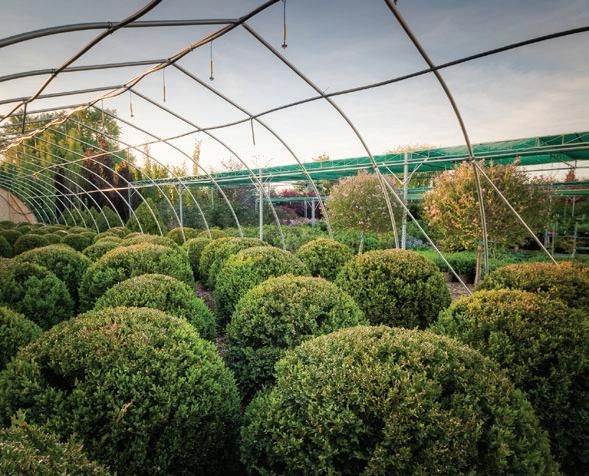

MARCH 2024 | 49
AT COIVIC SPECIMEN TREES, WE OFFER A WIDE VARIETY OF THE FINEST QUALITY PLANT MATERIAL. WE INVITE YOU TO VISIT OUR NURSERY AND BROWSE OUR HAND-SELECTED SPECIMEN PIECES. S P E C I M E N T R E E S C O I V I C 5487 EIGHTH LINE, MILTON, ONTARIO L9E 1A3 (905) 878-9101 INFO@COIVIC.COM WWW.COIVIC.COM COIVIC reistindustries.com 3PH STUMP GRINDERS @ReistIndustries
NEWPRODUCTS
5 marketing mistakes to fix right now
MARKETING. Everyone has an opinion. Some are good, most are not and few are backed by data and facts. So, how do you figure out what to do?

For the last three years, business has been booming. We are now facing headwinds and need to sharpen our approach to maintain healthy growth.
With that in mind, here are five common marketing mistakes to avoid in order to set yourself up for success.
#1: Marketing to the wrong part of your customers' brain
People make decisions emotionally, and then rationalize those decisions intellectually. We first need to engage the limbic brain, responsible for emotion and decision making.
Author Simon Sinek’s research dove into how the best leaders communicated. Long story short, they communicated through purpose and emotional engagement. A famous example of this is Martin Luther King crying out “I have a dream!”, not “I have a plan.”
We have to speak with purpose and let the world know what we believe.
What is your belief? Why does your organization exist and why should anyone care? This answer can help you build a unique position in your marketplace.
#2: Seeing revenue as primarily a function of new business Sales forecasts are primarily driven by pre-booked projects. But there are a number of other ways to drive revenue growth.
Every business basically uses the same model:
Leads x conversion rate = customers x average sale $ x average gross margin % = average gross margin $ x frequency of purchase per year x number of years as a customer.
You can optimize your revenue model throughout this formula. Here are six ways:
1) Invest in marketing to drive more qualified leads.
2) Invest in sales training to close more deals.
3) Raise your price or raise the minimum project size you’re willing to take on.
4) Invest in time-saving equipment.
5) Offer ongoing maintenance on your finished design/build projects.
6) Engage past customers with an email campaign.
#3: Talking about yourself generically
“We are a full service, design-build and maintenance landscape company.” Great, what’s the difference between you and the next company that says the same thing? If you’re competing on price, you’re selling yourself short.
You need to establish a position in the marketplace that allows you to become the choice, vs a choice. Are you experts in tight urban environments? Do you know the soil conditions in your local community better than anyone else? Whatever it is, double down on your specific expertise. It seems counterintuitive to focus on a smaller segment of customers to accelerate growth, but it works. Focus not only helps you attract the right customer, but it makes your team develop greater expertise. You get faster, more accurate with your quoting and costs, and more profitable.
#4: Not defining specific business outcomes as a goal up front
Setting concrete goals — like the number of qualified leads in a year, the cost per qualified lead and customer acquisition cost — can directly drive revenue and growth. Impressions, clicks, brand awareness and community visibility do not.
The days of not being able to measure marketing are over, and if someone says something that starts with “If I had a crystal ball…” RUN!! Any marketer worth their salt knows the tools and benchmarks that help us predict outcomes. If you work with professionals familiar with your industry, they can provide clear direction on what to expect and measure against that goal all the way through your marketing efforts so that you know exactly what’s working, what’s not and what to do about it.
#5: Not considering industry benchmarks
Do you know what a qualified lead for a $100k plus landscape construction project should cost? We work with over 30 landscaping clients and in 2023, we saw these leads fluctuate between $375$550 and about 20 per cent typically converted. That means paying between $1,875 and $2,750 to buy a new customer worth $100,000. That is a solid ROI.
Working with a partner who can help you benchmark your business is a game changer. It signals whether your business is doing better or worse than the industry average, how efficient and effective your marketing dollars are, and, it keeps your marketing partner honest.
Clean up these five mistake and you'll leave the amateurs in the dust.
Vanessa McQuade is part-owner of Intrigue Media, a digital marketing firm based in Guelph, Ont. For over 10 years, she has helped businesses get noticed and found by A-Clients.
50 | LANDSCAPE TRADES MENTORMOMENT




More Productivity Get comprehensive suppor t at 56 Canada-wide locations, keeping your Watch your tree care business grow with a full lineup of high- quality Morbark products, backed by Brandt. More Convenience Cut down on downtime with OEMMore Productivity Get comprehensive suppor t at 56 Canada-wide locations, keeping your Watch your tree care business grow with a full lineup of high- quality Morbark products, backed by Brandt. More Convenience Cut down on downtime with OEMBrandt is now Canada’s Exclusive Morbark Dealer, delivering more power ful value for you and your business than ever before: MOR POWER TO YOU. More Productivity Get comprehensive suppor t at 56 Canada-wide locations, keeping your Watch your tree care business grow with a full lineup of high- quality Morbark products, backed by Brandt. More Convenience Cut down on downtime with OEMBrandt is now Canada’s Exclusive Morbark Dealer, delivering more power ful value for you and your business than ever before: MOR POWER TO YOU. brandt.ca/morbark 1-888 -227-2638



































































 BY KARINA SINCLAIR
BY KARINA SINCLAIR







































































































